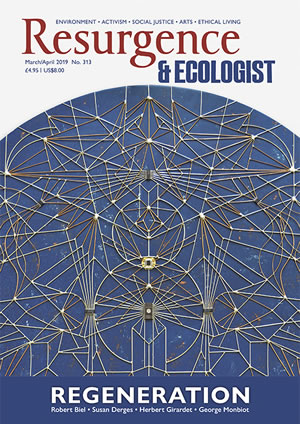As the first woman president of Ireland and a former UN High Commissioner for Human Rights, Mary Robinson looks at climate change through the lens of women’s rights and emancipation. In each chapter of this zippy book, she profiles grassroots and Indigenous women leading the way in very different situations and contexts – from a salon owner whose business was decimated in Hurricane Katrina, to an Alaskan woman who is watching her community literally melt away. Robinson doesn’t just want to fix this crisis. She wants justice.
In outlining the concept of climate justice, Robinson explains that those who contribute least to climate change – particularly women in developing countries – are worst affected by its impacts. But she also reiterates the optimistic flipside: the same people can be the engine for climate solutions, and such solutions can eradicate poverty and emancipate those who are oppressed. By telling these stories of marginalised frontline communities, she puts a hopeful, human face on the climate crisis.
However, for all these fantastic case studies of remarkable women, Robinson positions the Paris Agreement as the framework through which climate justice will be achieved, in chapters that open and close the book. I must confess that I think this is optimism that borders on unrealistic thinking. Global leaders have manifestly failed to tackle the climate crisis for decades, and there is little evidence to suggest that they have got any better since adopting the agreement in December 2015. As I write this piece, in late 2018, news has broken that global emissions have risen after a four-year plateau. The prospect of peaking global emissions in 2020 seems vanishingly remote, at least through the mechanisms of the Paris Agreement.
Of course, it would be unfair to expect a radically different outlook from a former UN special envoy on climate change; someone who has presumably dedicated a fair amount of her life to this process in the sincere conviction that it has a vital role to play. And undoubtedly it does have a vital role to play. Still, it is odd to read a book entitled Climate Justice that completely fails to engage with the fossil fuel industry and the poison of corporate interest in democratic systems. There is no mention of colonialism. There is no real discussion of neoliberalism. You will not find the word ‘capitalism’ in the index.
By the end of the book, Robinson’s view of the climate crisis seems to overlap heavily with the Al Gore school of thought. Basically, she is saying, we just need to make sure that developing nations skip coal, and we can leave the basic structures of modern capitalism intact. We need not be too surprised by this. There is a neon-lit clue on the back cover of the book. One must always be on one’s guard when reading a book on climate justice endorsed by Richard Branson.
There are flashes of radical politics and structural analysis in Robinson’s case studies. In her depiction of the rebuilding of New Orleans, for instance, you can see a clear example of what Naomi Klein has described as disaster capitalism, with communities cleansed of low-income and black families, and the city restructured in the interests of the rich. This particularly pernicious aspect of neoliberalism intersects strongly with climate justice, and it deserves deeper examination.
See also the fascinating chapter on the protection of forests in Vietnam, in which cooperatives of ordinary households have been set up to take collective responsibility for the trees, with brilliant results. Here we scratch the surface of what role the commons might play in tackling environmental degradation. But in most of these chapters, Robinson focuses on how grassroots and Indigenous women can get – as the title of one chapter has it – “a seat at the table” in global negotiations. This is certainly important and worthy work, but justice is unlikely to be delivered through a form of lean-in feminism for the global south.
As an introduction to the concept of climate justice, this book is an accessible and frequently inspiring global tour of people (mostly women) stepping up to demand and achieve climate action. It also deftly demonstrates how different forms and scales of injustice can intersect – exploring and explaining climate injustice at the level of individual, nation, race, gender and class.
On the subject of how climate justice might be achieved, however, Robinson places too much faith in world governments, without exploring the key structural barriers to climate action. I do not wish to be a fatalist. The climate movement needs optimism like Robinson’s, championing women disposed towards taking practical steps to fix a mess, while people like me mope about moaning that we are doomed. This book is a much-needed reminder of the possibility for agency, action and change. Nevertheless, there’s no getting away from the fact that if you don’t engage with the injustices of capitalism and colonialism, you are only partly engaging with climate justice.







